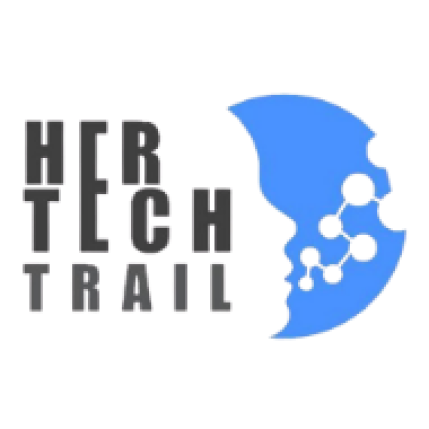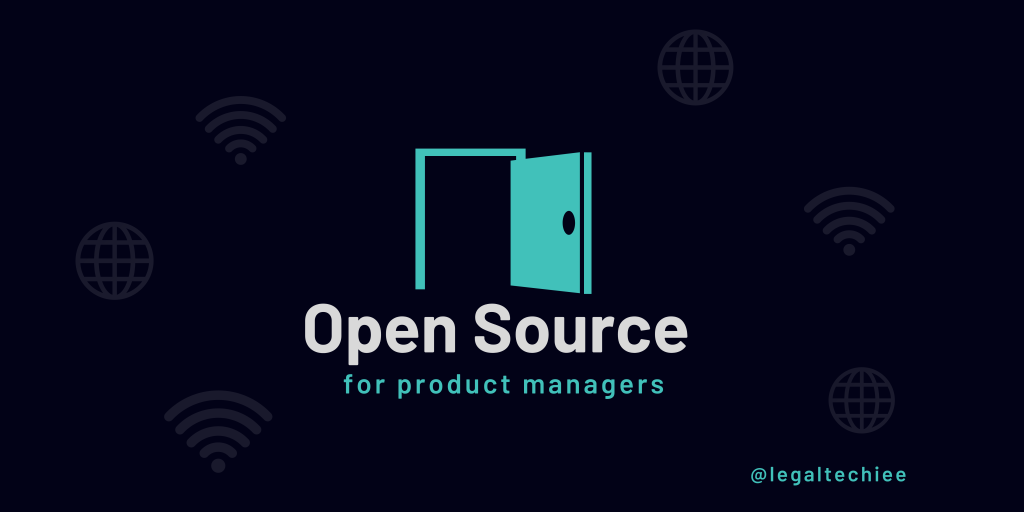10 Days Design Template for Social Media Managers With the increase in the number of social media talents, it is important that as a social media management starter, you possess extra skills to make you stand out. One of which is graphic design. Note: This guide/template is not limited to social media managers alone, but is also open to business owners who love DIY. Using Canva As a social media manager, Canva is the most popular tool to use for designs. This is because it can be used both on desktop and mobile too, allowing for accessibility wherever you are. Canva also has several easy templates you can use. However, it is not widely advisable to take templates straight off Canva. This is because, in order to create a standout identity for the brand you’re managing, the visual elements must be unique. In this case, your designs. Using this template, you have a clear shot at achieving uniqueness. Access the 10 Days Design Template here. Elysa Akpan Graphic Designer
Category Archives: Uncategorized
You might have come across some bants on the internet and social media like Twitter and the likes on which CSS framework is the best for styling. Some people claim tailwind CSS is the best tool to use as a developer, some say tailwind is for the weak and other frameworks are better while some claim that a developer who uses pure CSS for styling is the real MVP. But before I dive into what is better or not, let’s review what these styling tools are. CSS stands for Cascading Style Sheet It plays a major role in the presentation layer of websites and it is used to manage the look of an HTML or XML page. Front end CSS frameworks are collections of pre-written, standardized CSS code that are available as a package or library. A CSS framework’s main goal is to give web developers and designers a base from which to work, enabling you to create websites more rapidly and effectively. Frontend developers make use of various frameworks styling, some of which includes: bootstrap, materialUI, SCSS, Foundation, Bulmer, Tailwind CSS, pure CSS, LESS, SCSS, to mention a few. Over the years, different styling frameworks have emerged, each claiming to be better than its precedents but the choice of framework used depends solely on the developer or what the team the developer is using. We have general-purpose CSS framework and utility-based css framework. Utility-based means that when putting designs into practice, you use predefined classes to determine the font sizes, padding, margins, colors, and other characteristics on each individual item to produce a unique element from the choices provided.. Examples include tailwind CSS, materialized, Open props etc. General-purpose CSS frameworks on the other hand doesn’t have predefined classes and it’s more open-source. Some of which provides ready-made design blocks and built-in UI components. Examples are Bootstrap, Foundation, Bulma, vanilla framework etc. Now, what’s tailwind CSS? Firstly, what does the word tailwind mean? From Merriam Webster’s dictionary, Tailwind is a force or influence that advances progress toward an improved condition. Tailwind CSS is a utility-first CSS framework based on CSS for rapidly building modern websites without ever leaving your HTML. Tailwind CSS works by scanning all of your HTML files, JavaScript components, and any other templates for class names, generating the corresponding styles and then writing them to a static CSS file. The ability to customize each component separately and individually is the main benefit of this. Without coding new styles, any piece can be slightly changed. Let’s look at a sample code below… <div>Red</div> The above code shows a div block that is styled with the classes: bg-red-600 – this is the class that signifies the background color of the block and the number ‘600’ signifies the shade of the color. w-64 – this sets the width of the block, it can be any width specified by the developer, which can be checked from tailwind documentation h-32 – this sets the height of the block m-5 – this sets the margin text-center – this is synonymous to the text-align property in CSS with the center value. text-lg – this sets the font-size md: w- 72 – this sets the width at min width of 768px for responsive design. Which gives the result There are many more classes which can be used based on the requirements of the design you are working on. It does appear as a fun and easy framework to use but it also has its own disadvantages which include… Limited pre-built components Risk of inconsistent design Not a good recommendation for someone new to CSS It’s now clear that the choice of styling depends on the preference of the developer and the need of the project. If you want to save time, tailwind CSS is very good at that. To get started with using Tailwind CSS, click Here to start the installation process Elizabeth Afolabi Front end development alumni(Cohort 5) HerTechTrail Academy
In today’s competitive landscape, understanding the needs and motivations of your target audience is crucial for creating successful products. User personas act as a guidepost, directing you to create a product that addresses the demands and motivations of your potential customers. They provide essential insights about the people using your product, allowing you to precisely design, develop, and market it with utmost precision. Now, let us uncover the secrets of crafting compelling user personas that unlock the potential for product success. 🤔 HOW CAN ONE CREATE A USER PERSONA? In-Depth Research: Getting to Know Your Audience First, conduct in-depth research to discover your target audience’s demographics, behaviors, pain points, and goals. Gather insights into your potential customers’ lives through surveys, interviews, and market research. You uncover their age, gender, location, educational background, and professional interests, vividly depicting their identity. Identifying Pain Points It is no secret that empathy drives effective product design. By diving into and understanding your audience’s core challenges and pain points, you can design solutions that can truly make a difference. By empathizing with your target audience’s frustration and limitations, you understand their needs ranging from time constraints and technical hurdles to emotional barriers, and you uncover roadblocks that impede them from achieving their goals. Using the mobile fitness application as an example, you will discover through surveys and interviews, that your users struggle with time constraints, lack of motivation, and the need for personalized fitness routines. With this knowledge, we can concentrate on building features that directly address these pain points. Uncovering Goals and Aspiration: Empowering Users to Succeed Every user has ambitions, dreams, and goals. You learn about your target audience’s desires and motivations by researching them. You explore their short-term and long-term goals, determining what motivates them and what they envision for their future. These findings act as a guidepost for your product design decisions. Using the mobile fitness application as an example, research shows that users want to improve their general fitness, track their progress, and stay motivated throughout their fitness journeys. This knowledge becomes the driving force behind the features and functionalities of the product. Crafting Compelling User Personas: Bringing Them to Life Armed with rich data, and extensive knowledge, you closely build fascinating user personas that bring your target audience to life. You develop fictional characters to represent various portions of your customer base. Each persona encapsulates the essence of a particular user group, including demographics, pain points, goals, and aspirations. Meet Active Amy and Busy Ben, two personalities from our fitness app example. Amy, a 26-year-old professional, is seeking a flexible exercise routine matching her hectic schedule. Ben, a 30-year-old entrepreneur, is looking for quick, effective workouts that he can do anywhere. These characters serve as our guiding lights throughout the design process, representing our target audience and reminding us of their demands and motivations. HOW CAN THE UTILIZATION OF USER PERSONAS BE EMPLOYED TO ACHIEVE EFFECTIVE PRODUCT DESIGN? Influence Product Design and Features With Active Amy and Busy Ben in mind, you carefully modify the design and features of your product to meet their individual needs. You boost your chances of offering excellent value and gaining customer happiness by designing a user-centric product. Customizable workout routines, progress tracking, and motivational reminders are among the things you prioritize. You ensure an intuitive and personalized user experience by matching your product with the aims and pain areas of your personas. Tailor Messaging and Communication: Speaking the Language of Your Users User personas are extremely important in creating your marketing and communication strategies. You can create captivating messaging that resonates strongly with your target audience by understanding their personas’ beliefs, tastes, and language. The messaging in the mobile fitness app is focused on empowering customers, applauding their achievements, and emphasizing the simplicity and efficiency of the fitness solution. You get a thorough understanding of the target audience by creating detailed user personas, then aligning the product’s design, features, and marketing accordingly. This process’s insights enable you to design products that delight, resonate, and solve real-world challenges. Unleash the power of user personas, and your product will be a commercial success, capturing the hearts and minds of your customers. Onyinye Nebechukwu Product Management student, HerTechTrail Academy.
Demystifying open source and learning how to contribute as a non-technical techie. When you hear the phrase ‘Open Source,’ what comes to mind? Coding? Software engineering? Github? Markdown?, etc. Just like many of you are right now, I was once confused about what open source meant and worse of, I always wondered. How can a product manager efficiently contribute to open source? I scanned through the internet looking for answers to both concerns and even though I understood what Open source meant, I still had a hard time figuring out how to contribute to it. Anyways, this was until I heard about Outreachy. We will come to that but before then let me help demystify the concept of OPEN SOURCE for you. What is Open Source? Open source refers to a type of software or project where the original source code is made freely available to the public. It means that anyone can view, use, modify, and distribute the software without restrictions. It’s like having a recipe for a delicious dish that you can share with anyone and they can modify it to suit their taste. Why is Open Source Encouraged? Open source promotes collaboration and community involvement, allowing people from all over the world to contribute their ideas and improvements. It’s like a big team effort where everyone can benefit from and contribute to making the software better. Open Source for Non- Technical Techies Even if you’re not a technical person like me (I am a product manager), there are several ways you can contribute to open source projects: 1. Documentation: Many open source projects need help with writing and improving documentation. You can contribute by writing tutorials, guides, or improving existing documentation to make it more accessible and understandable for users. 2. Testing and Bug Reporting: As a non-technical user, you can test open source software and report any bugs or issues you encounter. This helps developers identify and fix problems, improving the overall quality of the software. 3. User Support: Participate in forums, discussion boards, or mailing lists related to the open source project. Offer help to other users by answering questions, providing guidance, or sharing your experiences with the software. 4. Translation: If you’re fluent in multiple languages, you can contribute by translating software interfaces, documentation, or websites into different languages. This helps make the software more accessible to users worldwide. 5. Design and User Experience (UX): If you have design skills, you can contribute by creating or improving the user interface, icons, or other visual elements of the project. Good design and UX greatly enhance the usability and appeal of open source software. 6. User Research: Every company building a problem solving product is interested in knowing the minds of its users regardless of what stage the product is. You can contribute by carrying our user surveys on target users, initial users, customers etc. in order to give feedback to the company. You will have contributed immensely by doing this and they will value it. 7. Advocacy: Another way to effectively contribute to opensource projects is to spread the word about open source projects. Write blog posts, share on social media, or give presentations at events to raise awareness and attract more users and contributors to the project. Contributing to open source is not limited to coding. Every contribution, no matter how small, can make a difference in the success of an open source project. Personally, I contributed my first open source project in March 2023 to the Oppia Foundation which is an education technology platform that aims to address educational inequality and expand access to quality education through the creation and use of personalized, engaging, and effective lessons that are specially designed to meet the unique needs of under-resourced learners around the world and right now, that opportunity is sitting pretty in my resume as a project I have contributed to as open source, highlighting the skills I picked up on the way such as presentation skills, UX research skills, documentation, market research and communication skills. If you want to read the full story of my contribution to open source as product manager, check my Link to Medium Post So you see, Open Source is indeed open to everyone to contribute. You just have to find a way to do so and a project that resonates with you. I hope you enjoyed reading and if you came looking for answers, I hope this helped. Feel free to drop a comment, or ask further questions about open source for non-technical techies in general. Sopuruchi Rufus Product Manager. Community Member.




